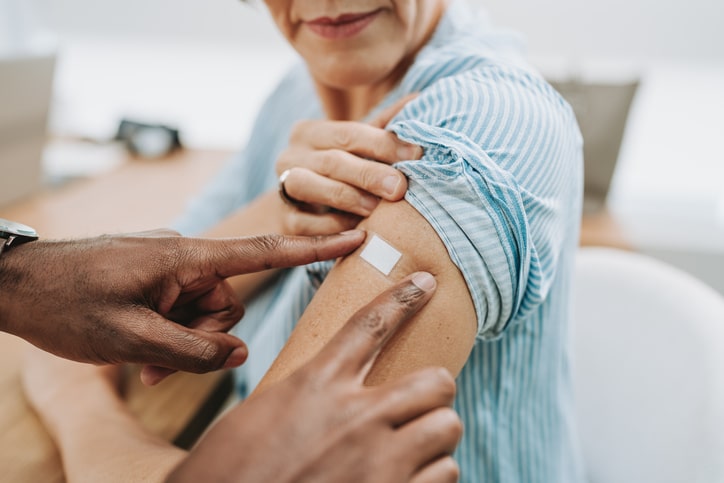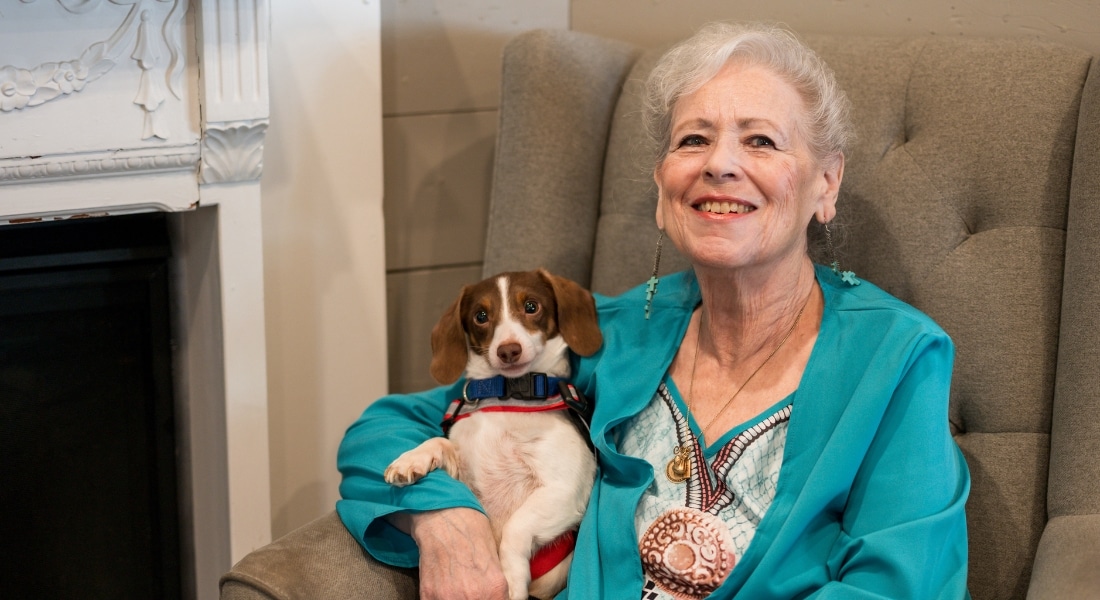When a painful case of shingles led to a dangerous blood clot, Sharron Mirikitani barely had the energy to get out of bed, let alone walk her dog, Patches, until she got all patched up at Methodist Midlothian Medical Center.
“It’s been quite a journey,” says the longtime Waxahachie resident, who got plenty of TLC along the way from her emotional support dog. “God knew exactly what he was doing when he led me to that hospital. They saved my life in more than one way.”
The 76-year-old was bedridden by shingles last fall, months before being diagnosed with a rare case of May-Thurner syndrome and deep vein thrombosis, or DVT.
Sharron is grateful that Frank Johnston, MD, vascular surgeon on the medical staff at Methodist Midlothian, removed the clot with a minimally invasive thrombectomy before her condition worsened.
“The staff who cared for me at Methodist Midlothian were so filled with love and compassion,” she says. “God walks these halls, through the hearts and spirits of the caregivers.”

Many older adults could benefit from getting the new shingles vaccine, which is far more effective.
SHINGLES PAIN IN LEG
Last September, the chronic pain in Sharron’s leg had gotten so bad that she went to Methodist Midlothian. She was diagnosed with shingles, a viral infection that causes a rash, nerve pain, and in some cases even blindness.
Over the months that followed, Sharron’s mobility decreased to the point that she barely got out of bed most days. Being bedridden raises the risk of blood clots significantly.
“The nerve pain in my left leg was so bad that I couldn’t use it,” she says. “When I would attempt to walk, I often fell. Adding to the lack of mobility was severe joint pain in both knees.”
By spring of 2025, her leg was swollen “to nearly four or five times” the size of her right leg. During a doctor’s visit in Cleburne, she was urged to go directly to the nearest ER for answers.
Imaging revealed a large blood clot in her left leg — a condition known as deep vein thrombosis — but without the right specialists on staff, she would need to be transferred to Methodist Midlothian for treatment.
“Methodist Midlothian immediately accepted the transfer,” Sharron says. “They accepted me when nobody else would.”

Dr. Johnston removed Sharron’s blood clot and implanted a stent in the cath lab.
RIGHT CARE, RIGHT NOW
Sharron was quickly admitted to the new Intermediate Care Unit at Methodist Midlothian. Patients who need a higher level of care, but not the intensive care unit, are given a room on the hospital’s Fifth Floor with a low nurse-to-patient ratio.
“I knew instantly that God had led me to the right place again,” Sharron recalls. “Methodist Midlothian will always have my strong support.”
Soon after she was admitted, Dr. Johnston confirmed her DVT diagnosis but also determined that Sharron had May-Thurner Syndrome, a condition where the right iliac artery compresses the left iliac vein where they cross paths in the pelvis, making it harder for blood to flow back to the heart.
Dr. Johnston presented what he felt was her best option: He would perform a minimally invasive thrombectomy to remove the clot, then place a stent to restore blood flow in her left iliac vein.
“Not all DVTs are treated surgically,” Dr. Johnston says. “Anti-coagulation medications are typically the first line of treatment, but in specific cases and dangerous clot cases like Sharron’s, surgically removing the clot is necessary.”

Sharron and her dog, Patches, share a moment at her home in Waxahachie.
SUCCESSFUL SURGERY
A few days later, Sharron was taken to the cath lab for her minimally invasive thrombectomy and stent placement.
“The surgical team was amazing,” she says, “and I was so relieved to know the clot was out and the stent was placed without issue.”
Sharron has steadily regained her strength, with plenty of love from Patches, her support dog. Now she is looking forward to delivering the gifts she bought for her team of caregivers.
“The time I spent with the medical team gave me such a renewal of spirit and hope,” she says. “I am so grateful.”






